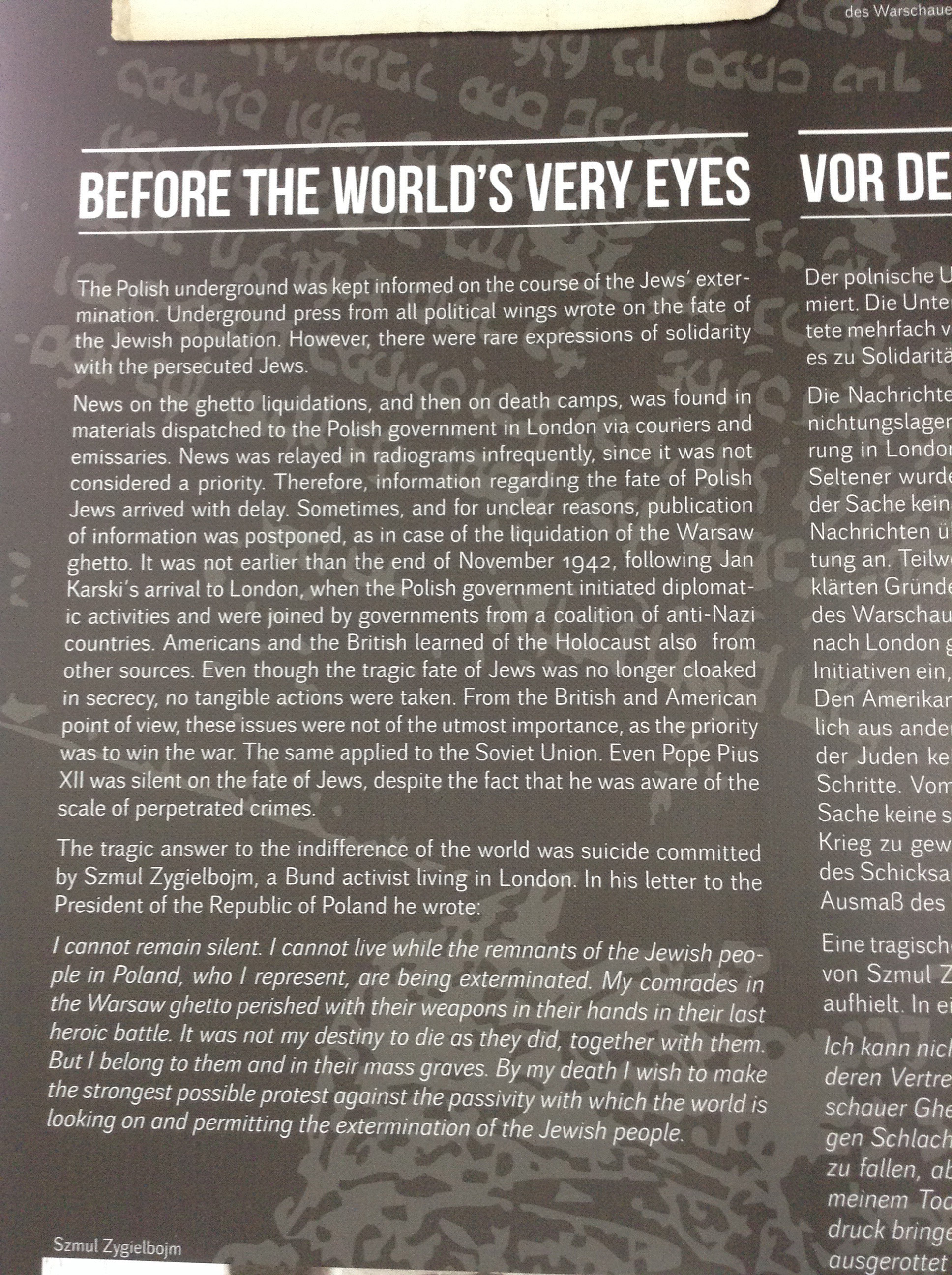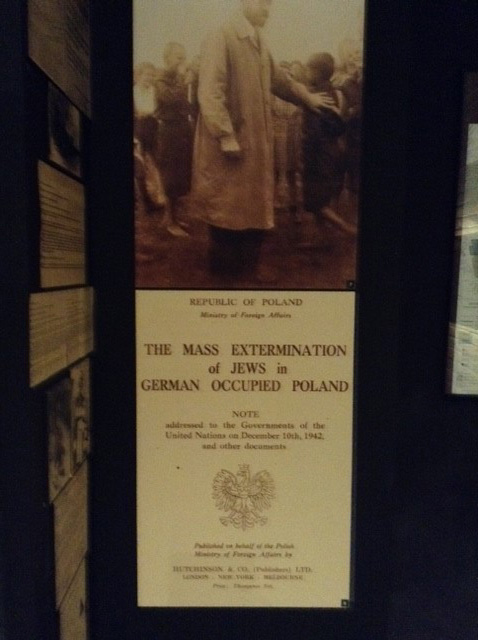This poster is found in the Topography of Terror Museum in Berlin,
Germany. To summarize the most poignant section of the poster, “Even though
the tragic fate of Jews was no longer cloaked in secrecy, no tangible actions were
taken. From the British and American point of view, these issues were not of the
utmost importance, as the priority was to win the war.”
This poster was photographed at the Pawiak politcal prison in Warsaw,
Poland. It shows that the Polish government in exile made the United Nations at the time
aware of the mass extermination of Jewish people in Poland. The presentation was made in
December 1942, two and half years before the end of the War



